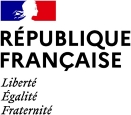
ORION
Modelling the dynamics of microbiological and ecotoxicological pressures on transboundary water bodies using active monitoring of sentinel species and mathematical models
-

The shared use of water resources in the Franco-Belgian Meuse catchment implies coherent and concerted management by all stakeholders. With this in mind, the ORION project aims to provide a holistic and dynamic characterisation of the pressures affecting Meuse's cross-border aquatic ecosystems to assess their vulnerability and resilience.
https://www.interreg-orion.eu/fr/
Building on the achievements of the INTERREG-V DIADeM project, ORION aims not only to consider the toxic and ecotoxicological effects of chemical stresses on sentinel species naturally present in aquatic environments but also microbiological pressures linked to protozoa, viruses and antibiotic resistance, to develop a predictive scenario component in a context of global change. Based on a multidisciplinary approach combining biology, microbiology, chemistry, ecotoxicology and modelling, ORION aims to improve the prediction of the consequences of certain management actions on ecosystems.
The geographical perimeter extends over the Meuse from Sedan to Namur and two tributaries, the Semois and the Haute-Sambre. At the end of the project, the results acquired on all the bodies of water on either side of the border will provide information on (i) the presence of chemical and biological contaminants at a given time and place, (ii) the spatio-temporal dynamics of the contaminants and (iii) the environmental and toxic impacts propagated throughout the catchment area, whatever the origin of the contamination. Beyond the holistic consideration of an ecosystem, this project will contribute to the strategy's implementation for the global assessment and prediction of the spatiotemporal dynamics of contaminants and their impacts, through the development of innovative tools.
The consortium comprises 6 operators, including the lead partner (URCA) and 9 partners bringing together water management stakeholders in France, Wallonia and Flanders. ORION will bring together the various cross-border players (academics, managers, users) involved in protecting aquatic environments during co-construction workshops while informing fellow citizens of the dangers posed by the deterioration in the quality of water bodies. In this way, it will help raise public awareness of the quality of cross-border bodies of water, with an emphasis on upstream-downstream solidarity (upstream actions impacting downstream uses), particularly in the context of climate change. Finally, the results of the ORION project will be presented at training courses for current and future water stakeholders in France and Belgium.

